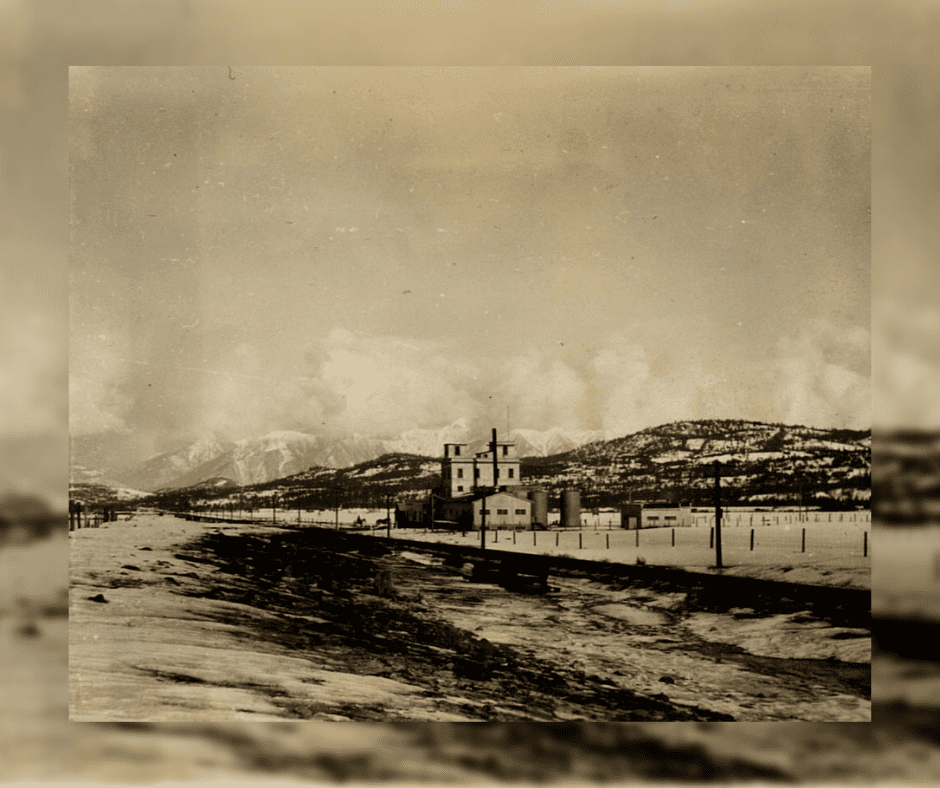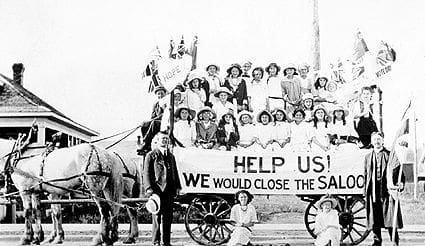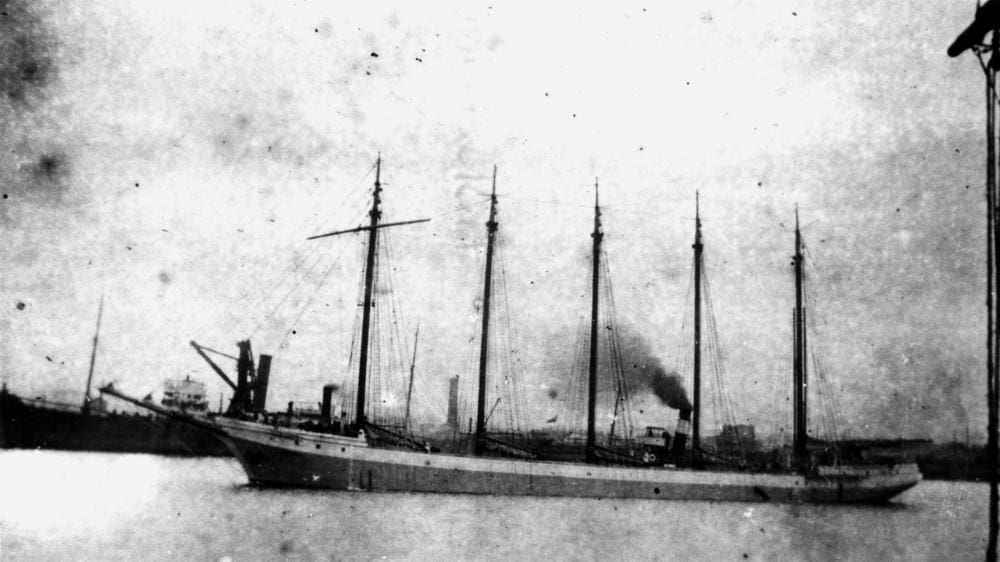
Canada’s Boozy History
By Emily Russell
Temperance was a movement that spread across the Western world in the late 19th and early 20th centuries. The movement aimed to limit or all-out ban the consumption of alcohol-based on the belief that it was responsible for the issues plaguing Western society. This attitude is what brought prohibition to Canada. The Temperance Act, also known as the Scott Act, was introduced in 1878. The Act gave local governments the power to ban the sale of alcohol. By 1917 all provinces except for Quebec had prohibited the sale of alcohol. The decentralization of prohibition in Canada made the issue more complex and less successful than the movement in the United States.
Alcohol: Pre and Post European Colonization
Content warning: alcohol, violence, racism, and mention of intergenerational trauma
Prior to colonization, some Indigenous groups used fermented drinks and/or herbs in spiritual rituals and considered the substances sacred, not for everyday consumption. Contrarily, Europeans used substances, like alcohol, in social settings or for entertainment. After the arrival of European colonizers, alcohol consumption changed drastically. The British and French quickly adjusted their trading strategy to take advantage of the addictive properties of alcohol in the territory now known as North America. Colonizers brought alcohol with them for personal use but quickly realized the power that alcohol had and how it could be used to hurt Indigenous communities. Trading alcohol took off during the fur trade, where rum and brandy would be exchanged for animal skins. Alcohol can act as a catalyst for violence, and it can be unclear when to stop drinking, especially the first time. Alcohol is also highly addictive and this severely impacted resource management. Skins and furs were often traded for alcohol rather than profit which caused poverty amongst hard-hit communities. Colonial powers took advantage of their struggles and used addiction to spread misinformation and racist stereotypes about Indigenous peoples. The lasting effects of alcohol consumption have contributed to intergenerational trauma amongst Indigenous communities.
Canada’s Drinking Problem
How did Canada shift from using alcohol as an exploitative bargaining chip to trying to outright ban the substance nationwide? Indigenous communities had been fighting to ban liquor sales for upwards of a century. It was not until overconsumption started affecting the lives of white Canadians that it was considered an issue. Throughout the 19th and 20th centuries, water contamination was a serious problem, especially in cities. Before sewer systems were installed, cities were a biohazard littered with human and animal waste piling up on the streets, dumps, and abandoned mines. Rain would wash waste into clean water above and below ground, leaving city residents with two options, boil the water to make tea and coffee or drink alcohol. At first, it was Canada’s bourgeoisie who led the Temperance movement. The upper class depended on lower-class workers and saw that alcohol as a threat to productivity. This coincided with the increased presence of evangelicals in Canada and the attitude that personal responsibility could redeem oneself, a vastly different lifestyle than the more established churches were preaching. The bourgeoisie and evangelicals were not enough to keep this movement going nationwide, and it would have died out had the working class not championed their cause.
During the 19th century, a global shift changed class structures and gave rise to the middle class. British North America, the land now known as Canada, was reliant on Britain because of their mercantilist relationship. This relationship stalled industrialization in British North America until it ended in 1840. After the mercantile relationship ended, the colony entered the first period of industrialization, moving away from agriculture towards resource extraction. This shift led to a swift period of Urbanization, with large numbers of people moving into the cities, resulting in contaminated water and increased demand for coffee, tea, and alcohol.

The economy became dependent on the working class. Jobs were created to keep up with high demand. After industrialization, specifically, the second wave, which began a few decades later, there was more money in circulation than ever before. Having more money gave workers the power to participate in the economy and politics. The early 20th century was also when white women were fighting for the right to vote. Suffragettes used maternal feminism to fuel their movement, which included a push for prohibition. They argued that drinking was a danger to women, children, and embryos. In Manitoba, Alberta, and British Columbia, white women won the right to vote the same year prohibition was put into law.
These factors alone were not necessarily enough to enact prohibition. World War I pushed the general population to accept the temperance movement. Leading up to the Great War, there was a small supporter base for temperance centred around health and wellness, however, temperance was a local issue under the Canada Temperance Act of 1878. Ultimately, it was the sentiment that people on the Homefront should stay “dry” in support of the troops that turned prohibition into a federal issue.
Rum Running, Bootlegging, and Racketeering
Rum running and bootlegging was a risky business during prohibition. Bootlegging was becoming quite a problem in British Columbia. Our proximity to the U.S. and Alberta made the East Kootenay’s a haven for those looking to make some dirty money. Vancouver Island was known for its rumrunners. Ships were easily disguised as fishing vessels, and international waters helped make it even easier to avoid the long arm of law.
We often associate the illicit trade of alcohol with our southern border, but it happened within Canada’s borders too. British Columbia was “wet” until 1917, a year later than Alberta and Saskatchewan. In 1916 when Alberta went dry, small bootlegging operations sprung up, but they were not too serious yet as importing alcohol was still allowed. Most of the pushback came from home bakers who required a prescription to purchase vanilla extract. The prescription to purchase a $0.25 bottle of extract cost $1.00, which provoked a small operation amongst these bakers. Their efforts did not last long, and the operation quietly disappeared. As prohibition went into full swing, bootlegging and rum-running enterprises took off in British Columbia and across the country.

Along the coast, ships were taken out to international waters to avoid authorities. Nanaimo was a popular spot for rum runners and a favoured destination for the Malahat. She acted as a floating warehouse where smaller vessels could go for supplies before heading south. The Malahat was nicknamed the “Queen of Rum Row.” Rum Row refers to the line of ships that would anchor off of the U.S. coastline holding product, often Caribbean rum, Canadian beer and whiskey, or French champagne. Both the east and west coasts had a Rum Row, and the ships often sported a false flag, usually British, to avoid attracting attention.
Bootlegging was happening across Canada. Nationwide, folks were taking alcohol across to the U.S. to make some cash. At first, bootleggers were able to get across relatively undetected and without too much trouble. The Canada-US border is the largest unprotected border in the world, and it is relatively indistinguishable. As the R.C.M.P. started to catch on, bootlegging became a lot more dangerous, and a few big names were able to turn it into a professional business. One of Canada’s most famous bootleggers was Emilio Picariello. Picariello’s life of crime was something out of a movie, often founding himself involved in high-speed chases, shootouts, and riots. Picariello transported alcohol from British Columbia into Alberta and Montana from 1916 to 1923. For his first few shipments, Picariello used a Ford Model T. He filled pipes with cement and attached them to the bumper to help run barricades. Although affordable, the Model T lacked the speed necessary for outrunning the police, so he made the switch to the Mclaughlin Six Specials. The Mclaughlin was nicknamed the “Whiskey Six Buick.” They were favoured by bootleggers like Picariello because of their luxury and speed. The 6-cylinder engine made the Whiskey Six much faster than the less expensive Model T. Emilio Picariello and his accomplice Florence Lassandro were executed on May 22, 1923, for his involvement in the death of Constable Lawson. Although, who shot the constable was never proven.
Prohibition in Canada did not last long after World War I came to an end. By 1920, most provinces had repealed their policies and allowed the sale and consumption of alcohol to continue. This was just in time to cover the demand coming from the United States, after introducing prohibition in 1920. Organized crime, homemade hooch, and racketeering plagued the country for over a decade, in no small part due to Canadian efforts.
Sources
7.7 Temperance and Prohibition – Canadian History: Post-Confederation (opentextbc.ca)
Anderson, W. Frank. “The Rum Runners.” Frontier Publishing Ltd. ca. 1968., Calgary, Canada.
Boyce, Cyril D. “Prohibition in Canada.” The Annals of the American Academy of Political and Social Science 109 (1923): 225–29. http://www.jstor.org/stable/1015012.
Days of the Rumrunners | Fernie.com
Emilio Picariello — Galt Museum & Archives
General Motors of Canada | Oshawa’s Automotive Community (communitystories.ca)
Industrialization in Canada | The Canadian Encyclopedia
Moore, Stephen T., “Bootlegging and the borderlands: Canadians, Americans, and the Prohibition -era
Northwest” (2000). Dissertations, Theses, and Masters Projects. Paper 1539623992.
https://dx.doi.org/doi:10.21220/s2-321n-x156
Temperance Movement in Canada | The Canadian Encyclopedia
The Cranbrook Brewing Company – Cranbrook Daily Townsman (cranbrooktownsman.com)
Read More:
- East Kootenay Heritage Fair Showcases Young Historians
- CAMAL Named New Operator of Fort Steele Heritage Town
- Holiday Message
- 2023 Holiday Message
- The Closure of the Bateman Gallery and the Future of the Cranbrook History Centre
Interested in writing a blog post? Send us a message with your topic!
